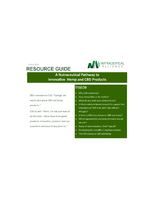Laser Marker puts bar codes on forged steel.
Press Release Summary:
 Laser provides identification of precision castings and forgings in harsh environments using standard bar code scanners. Machine applies layer of laser-marking ink to thoroughly cover rough shot blast surface of forging. After short dwell time to allow ink surface to cure, 25W CO2 laser and optics blacken ink. After marking of text and barcoded information is complete, barcode scanner automatically reads message to verify quality of mark.
Laser provides identification of precision castings and forgings in harsh environments using standard bar code scanners. Machine applies layer of laser-marking ink to thoroughly cover rough shot blast surface of forging. After short dwell time to allow ink surface to cure, 25W CO2 laser and optics blacken ink. After marking of text and barcoded information is complete, barcode scanner automatically reads message to verify quality of mark.Original Press Release:
LabeLase System Marks Bar Codes on Forged Steel Components
InfoSight Corporation has developed new technology for direct laser marking of automotive components with high contrast bar codes and text messages. The breakthrough traceabilty technology now allows for automatic identification of precision castings and forgings in harsh environments using standard bar code scanners without the need for unreliable adhesive labels or expensive vision systems.
One such system has been designed and installed for a major manufacturer of automotive steel forgings. For this application, the part is automatically loaded into the custom-designed marking cell and then end-justified with a pneumatic pusher. Once the part is in position, the machine applies a uniform layer of proprietary laser-marking ink to thoroughly cover the rough shot blast surface of the forging. After a short dwell time to allow the ink surface to cure, a 25W CO2 laser and custom optics blacken the ink. After the marking of text and barcoded information is complete, a barcode scanner automatically reads the message to verify the quality of the mark and then the pusher is retracted. The entire cycle is completed in about 20 seconds.
The resulting high contrast (black-on-white) text and barcodes are crisp, sharp images for maximum visibility and are highly resistant to various machining and cutting fluids. Other ink formulations have been developed for surfaces such as ceramics and aluminum, and to survive reheat furnaces. The finished component can be later scanned with standard, inexpensive commercially available barcode scanners throughout the assembly plant to provide complete birth history data.



